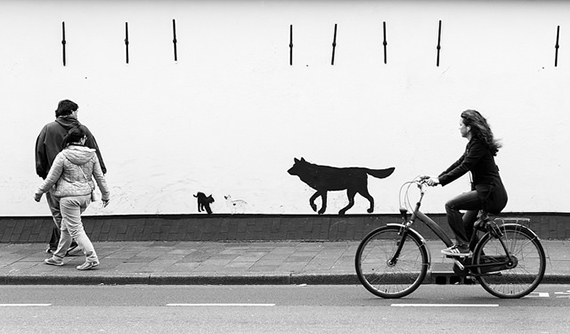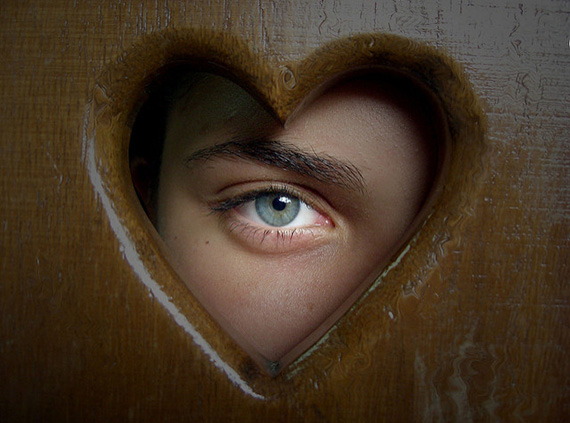New photographers are taught the rule of thirds as one of the first guidelines toward making exciting pictures. This is a technique in which a hypothetical grid (similar to a noughts and crosses board) is utilized to frame subjects. The grid separates an image into nine equal portions with four junction points and four lines.

photo by Michael Miller
These points of intersection—and the lines which create them—serve as focus points. They accommodate a viewer’s natural tendency to focus on them. In doing so, the rule of thirds helps you to make pictures that are concurrently balanced and engaging.
In this post, we’ll explain how the rules of thirds is employed for single subject and multiple subject compositions. We’ll describe the guidelines of engagement and supply an example which will explain how the technique can be applied poorly. Lastly, you’ll discover why all rules of composition, including the rule of thirds, are meant to be thrown out.
One Subject vs. Many Subjects
In single subject photographs (i.e. those picturing a lone person or object), the composition’s main focal anchor rests along the left line of the grid. Points of interest that are positioned on that line will inspire your spectator to interact with your photo. When framing multiple subject compositions, a slightly different approach is needed.
Several points of interest need a prioritization of each subject’s importance to the photograph. You’ll need to consider which subjects will be in the foreground and which will remain in the background. Where you place those subjects on your rule of thirds grid will either underline or discount their significance.

photo by Sadettin Canbay
Of the four intersection points on your grid, the bottom right point has the most focal weight. That’s where your viewer’s eyes are naturally drawn in multiple subject compositions. The upper left point has the least focal weight. Imagine you were to seat your foreground subject on the upper left junction point while placing your background subject on the bottom right of the grid. Such framing would appear counterintuitive to your spectators. It would confuse them.
Further Rules of Engagement
If humans are included in the foreground of your photos, the direction in which they are looking plays a significant role in creating a stimulating composition. The rule of thirds is best used in such circumstances when the subject is placed upon the line opposite of the direction in which he or she’s looking.
For instance, imagine your image is focused on a man who is looking toward the right. He deserves to be positioned on your grid’s left line. Likewise, the line along which he is looking should run along the top line of your grid. This kind of framing is intuitive to the viewer; it seems natural. And is more engaging.
The rule of thirds is usually applied poorly. This happens when the shutterbug understands the strategy, but does not fully appreciate why it works. As an example, suppose you are photographing a dog and have him framed so his head is positioned on the higher left point and his tail on the bottom right point. As discussed earlier, the bottom right point has the most focal strength. The upper left point, the least. As a result, the dog’s tail would receive the attention rather than his head, reducing the impact of your picture.
Learning And Bending the Rule of Thirds
Like all rules of composition, the rule of thirds can be bent or broken. In reality, setting it aside can yield photographs that deliver shocking impact. As an example, a lone road that runs directly into the horizon can be positioned directly in the middle of your image. While doing so ignores the rule of thirds, it can produce a powerful image that draws your viewer’s eye.

photo by Rufino
By framing your subjects according to the rule of thirds, you’ll be able to create compositions that appear balanced and interesting to your viewer. That said, after you learn the way to effectively use the rule of thirds, be open to experimenting with pictures that ignore it.
About the Author
This article was kindly provided by Poster Brain, whose passion is poster printing (and, for some reason, hair). They’ve scoured the planet for the finest quality paper, printers, and inks to provide an incredible poster experience.
Like This Article?
Don't Miss The Next One!
Join over 100,000 photographers of all experience levels who receive our free photography tips and articles to stay current:






Actually, there are rules about taking photos of people. Gros-Plan, Prim-Plan, Median.
Ive been looking how to apply the rule of third in photoshop and what is the rule of thirds but i cannot look it , and thanks it helps me…..
I’m an old pic guy from the film days.. Worked as a pro for 11 years.. Have done weddings, portraits etc… The people rule I always see broken is what I call “centeritius”… Where you see the face in the center… even times the eyes… in the center of the frame…
“I stopped taking photo’s years ago… I now MAKE photos…
jim
haha, interesting comment barbara. I don’t think there is rule about taking photos of ppl.
I’ve been looking for a “rule” about taking photos of people. It amazes me how many people chop off the legs and feet of someone in the picture so that you see almost the whole person…but no feet! I can understand if it is a photo of something nearby with the person in frame but space to take the shot is limited. I’m talking about taking pictures in a wide open space (say, a beach) with a nice background which you want to include. Shouldn’t the feet be in the shot? Also, I’ve seen pics of “close-ups” where the party of people is chopped off at the thighs. Wouldn’t it be better at least to go from, say, the waist up? Or tighter? Am I the only person who is annoyed by this? And why don’t the photographers “see” it in the first place? Just curious. Not a true rant.